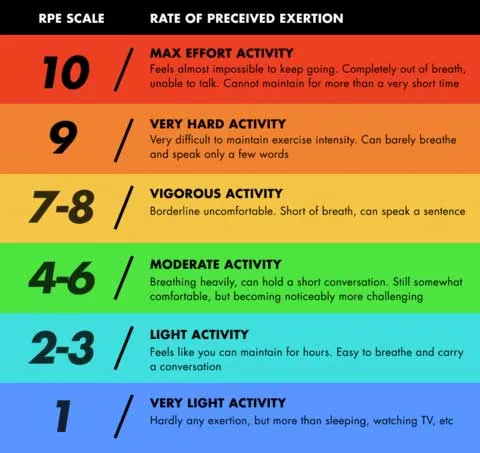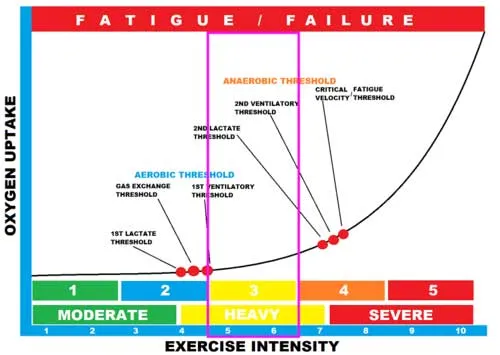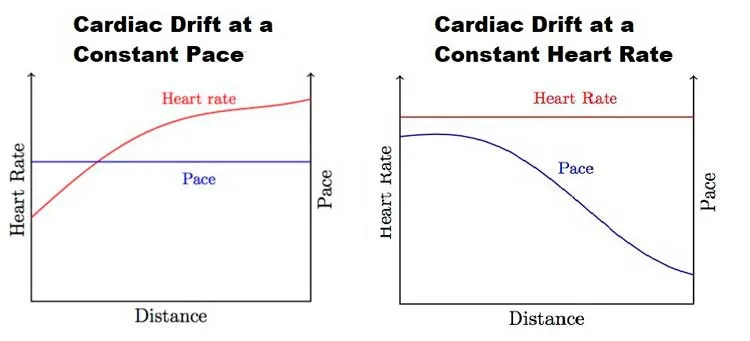Heart rate can be a useful tool for training if utilized correctly and in the right situations. Although, there are many situations where heart rate can be misleading. Heart rate is NOT a measure of work the body is performing. It is a sophisticated response based on many different factors relating to someone’s biopsychological state.
DOES HEART RATE TRAINING HAVE A PLACE?

Assuming accurate heart rate zones have been established through professional testing of an athlete’s maximum heart rate and accurate heart rate measurement in training through a high-quality chest strap, the efficacy is still
questionable due to the amount of factors acting on heart rate at any given time.
Trail and ultra running involves a lot of unique factors that athletes endure which have profound effects on heart rate, which leads many to believe that heart rate monitoring may not even have a place in trail and ultra running.
WHAT CAN BE USED INSTEAD TO GAUGE INTENSITY?

So then what should we do? I think using heart rate as a “check-in” is fine, as long as you understand what can affect it. Using a “Rating of Perceived Exertion” can be more beneficial as it can somewhat reliably track an athlete’s
relative effort at a given time which may speak more accurately to the stressors affecting their performance. RPE is a scale of 1-10, with 10 being a “maximal effort”.

For example, instead of planning to run in “Zone 3, 70-80% max HR”, for someone this might be “136-156 BPM”(see chart), it might be better to aim to run at an RPE (rate of perceived exertion) of a 5-6/10. Performing a gradual
“all-out” test, slowly ramping up to your maximum effort, even just once for practice, can give an athlete a more accurate perspective of the ranges throughout this 1-10 scale of perceived exertion.
Another way to monitor your intensity, other than heart rate, can be the “talk test”. For example, an “easy” pace should be “conversational”. You should be able to tell me a joke, easily. As intensity increases, the amount of words you can speak at once becomes more limited.
Simplified Talk Test:
- Moderate Intensity Domain (Zones 1-2/5, or 1-3/10 RPE)
- You should be easily able to converse with someone else, tell a joke, or a story.
- In one breath, you should be able to count 1-20, or speak the alphabet A-Z
- Heavy Intensity Domain (Zones 2-3/5 or 4-6/10 RPE)
- Can only speak single sentences at a time.
- Labored breathing sometimes breaks up spoken sentences.
- Severe Intensity Domain (Zones 4-5 or 7+/10 RPE)
- You are only able to speak one or two short words at a time due to severely labored breathing.
WHAT ARE SOME OF THE MOST COMMON FACTORS THAT AFFECT HEART RATE VARIABILITY?
Take a look at the slides below to get a glimpse into what and how things are affecting your heart rate during trail and ultra running. Keep in mind that these are only some of what I believe to be the most common factors affecting trail and ultra runners. There are many factors that are not listed here that add to the equation but may not be worth talking about right now without over-complicating things.
CARDIAC DRIFT
Have you ever noticed that over time during a run your heart rate will slowly climb for the same given effort or intensity? This is known as cardiac drift. It adds to the complexity of why monitoring intensity with heart rate can be challenging. Effort may remain the same, but pace may decrease at a given heart rate… or another example would be that if you were able to maintain your pace, effort and heart rate will rise.

What causes this? It’s complicated. It’s basically a combination of everything we have talked about so far. Let’s say you’re doing a long run in the mountains. Maybe you slack a little bit on staying fully hydrated, combined with cumulative eccentric muscle damage to your legs from running the downhills, and depleting of your glycogen stores… heart rate will inherently rise for a given effort. At the start of your run you might have been able to maintain a 140 BPM heart rate at an RPE of 5-6, but a few hours later, to keep the same speed you might be at an RPE of 6-7 and heart rate of 155 BPM.
CONCLUSION
It can be tempting to use the next best feature in fitness technology. In recent years, the big feature being pushed on fitness technology has been heart rate monitoring. Although when it comes to monitoring exercise intensity, heart rate is definitely not a consistent and reliable option. Does this mean we shouldn’t pay attention to heart rate at all? No. It means we can use heart rate as a check-in when appropriate, but taking into consideration ahead of time what it means, and what it doesn’t mean.
The take-home message is that heart rate is not a direct measure of work output or performance, but when combined with other methods of monitoring intensity, like “Rating of Perceived Exertion” it can give us more information.









